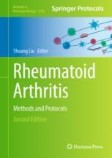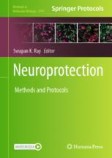Search
Search Results
-
Insoluble Cellular Prion Protein and Other Neurodegeneration-Related Protein Aggregates in the Brain of Asymptomatic Individuals
The pathological detergent-insoluble prion protein (PrPSc) is derived from its normal detergent-soluble cellular form (PrPC) through a structural...
-
Mechanism of Insoluble Aggregate Formation in a Reconstituted Solution of Spray-Dried Protein Powder
BackgroundSpray-drying is considered a promising alternative drying method to lyophilization (freeze-drying) for therapeutic proteins. Particle...

-
Viral vector gene delivery of the novel chaperone protein SRCP1 to modify insoluble protein in in vitro and in vivo models of ALS
Protein misfolding and aggregation are shared features of neurodegenerative diseases, including amyotrophic lateral sclerosis (ALS), and protein...

-
Acute phase response following pulmonary exposure to soluble and insoluble metal oxide nanomaterials in mice
BackgroundAcute phase response (APR) is characterized by a change in concentration of different proteins, including C-reactive protein and serum...

-
Protein Ubiquitination Assay
Ubiquitin, a 76-amino acid protein which could covalently bind to a target protein, is catalyzed by an enzymatic cascade comprising of ATP-dependent...
-
TurboID-Based Proximity Labeling: A Method to Decipher Protein–Protein Interactions in Plants
Proteins form complex networks through interaction to drive biological processes. Thus, dissecting protein–protein interactions (PPIs) is essential...
-
Protein citrullination marks myelin protein aggregation and disease progression in mouse ALS models
Increased protein citrullination (PC) and dysregulated protein arginine deiminase (PAD) activity have been observed in several neurodegenerative...

-
Brain clearance of protein aggregates: a close-up on astrocytes
Protein misfolding and accumulation defines a prevailing feature of many neurodegenerative disorders, finally resulting in the formation of toxic...

-
Progress in mass spectrometry approaches to profiling protein–protein interactions in the studies of the innate immune system
Understanding protein–protein interactions (PPIs) is pivotal for deciphering the intricacies of biological processes. Dysregulation of PPIs underlies...

-
Disease-Associated Q159X Mutant Prion Protein Is Sufficient to Cause Fatal Degenerative Disease in Mice
PRNP Q160X is one of the five dominantly inheritable nonsense mutations causing familial prion diseases. Till now, it remains unclear how this type...

-
Protein Disulfide Isomerase Endoplasmic Reticulum Protein 57 (ERp57) is Protective Against ALS-Associated Mutant TDP-43 in Neuronal Cells
Amyotrophic Lateral Sclerosis (ALS) is a severe neurodegenerative disease affecting motor neurons. Pathological forms of Tar-DNA binding protein-43...

-
In Situ Proximity Ligation Assay to Visualize Protein–Protein Interactions in Tumor Specimens
Protein–protein interactions (PPI) are the basis of various biological phenomena, such as intracellular signal transduction, gene transcription, and...
-
Soluble and insoluble dipeptide repeat protein measurements in C9orf72-frontotemporal dementia brains show regional differential solubility and correlation of poly-GR with clinical severity
A C9orf72 repeat expansion is the most common genetic cause of frontotemporal dementia (FTD) and amyotrophic lateral sclerosis. One of the suggested...

-
Assessing Protein Expression in Patient-Derived Xenografts Using Western Blotting
The use of patient-derived xenografts (PDXs) in cancer research is increasing due to their ability to closely mimic the features of patient tumors....
-
Analysis of Pancreatic Acinar Protein Solubility in Autophagy-Deficient Mice
Autophagy of the endoplasmic reticulum, or ER-phagy, maintains the homeostasis of the secretory pathway. This is particularly prominent in...
-
Autoantibody Profiling Using Human Autoantigen Protein Array and AlphaScreen
Autoantibodies that recognize self-antigens are believed to have a close relationship with diseases such as autoimmune diseases, cancer, and...
-
Stability and Characterization of Protein- and Nucleotide-Based Therapeutics
Throughout the development process of protein or nucleotide-based therapeutics, a broad array of analytical techniques is applied on a routine basis...
-
Single-domain antibody-based protein degrader for synucleinopathies
Synucleinopathies are a group of neurodegenerative diseases characterized by the accumulation of α-synuclein (α-syn) in the brain, leading to motor...

-
Reconstruction of Protein/Liposome Complex
Most ion channels and receptors are distributed in cell membranes and are known as membrane proteins. These membrane proteins are folded in the cell...
-
Isolation and Detection of Pathological Tau Species in a Tauopathy Mouse Model
Tau protein in Alzheimer’s disease (AD) and tauopathies becomes insoluble due to hyperphosphorylation, conformational alterations, and aggregation....
